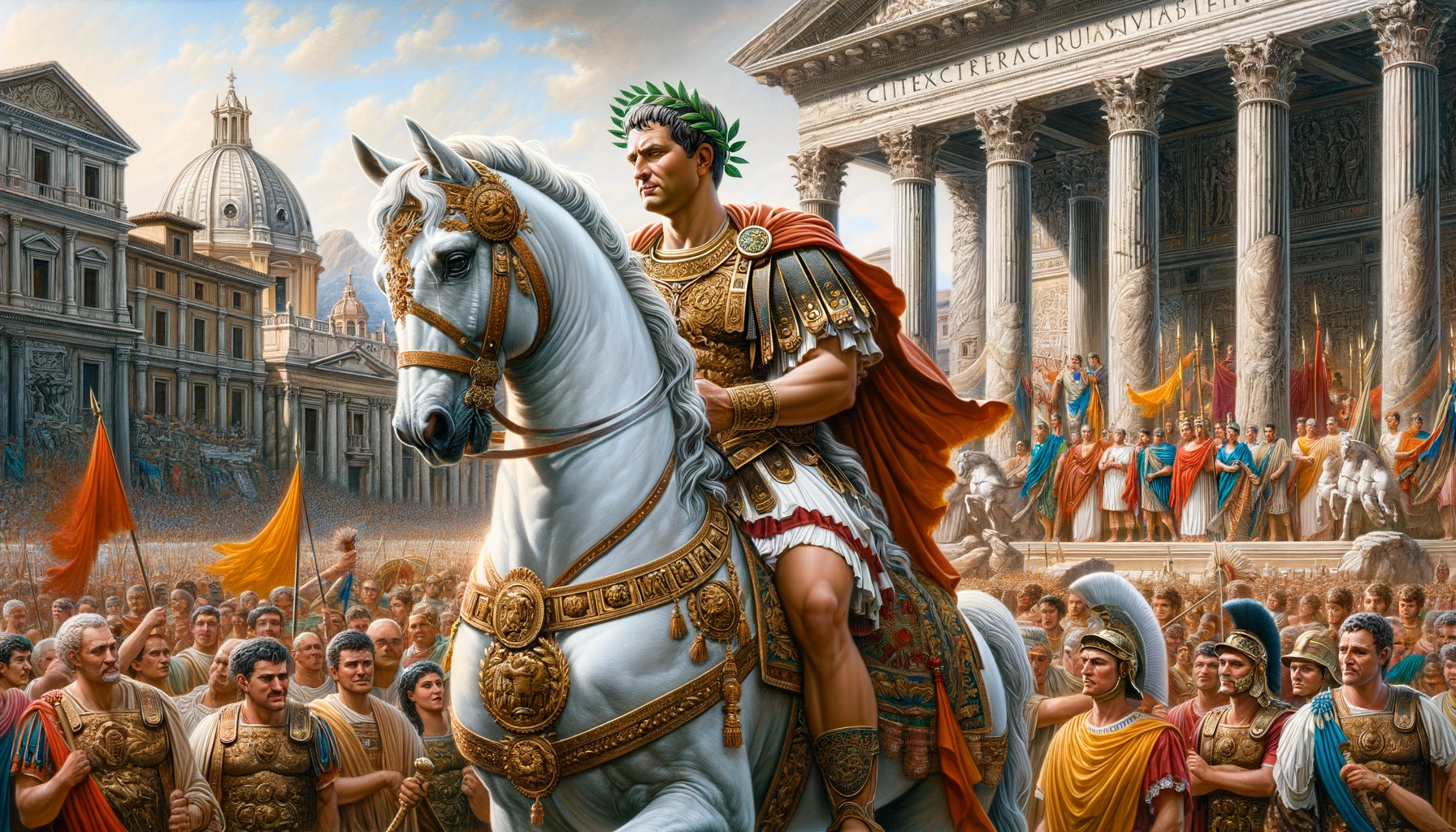Claudius’ Triumph at Camulodunum
As commanded, Plautius paused his assault on the Britons and summoned Claudius to lead the final assault on the Catuvellaunian capital at Camulodunum (modern Colchester).
For he had been instructed to do this in case he met with any particularly stubborn resistance, and, in fact, extensive equipment, including elephants, had already been got together for the expedition.
Cassius Dio Cocceianus, The Histories of Rome Book LX, Chapters 21
Meeting up with Plautius, Claudius briefly put under siege a poorly defended Camulodunum, took the settlement, and afterward received surrender from a number of British kings, which may have included a ruler from the Orkneys!
[Claudius] crossed over to Britain and joined the army, which was waiting for him at the Thames. Taking over command, he crossed the river and engaging the natives who had gathered at his approach, defeated them, and took Camelodunum [Colchester], the capital of Cunobelinus. As a result of this he won over numerous tribes, some on terms of surrender, others by force, and was saluted Imperator on several occasions – contrary to precedent; for no one may receive this title more than once for the same war. In addition he disarmed the Britons and handed them over to Plautius, whom he authorised to subjugate the remaining areas. Claudius himself hastened back to Rome, sending news of his victory on ahead by means of his sons-in-law, Magnus and Silanus.
Cassius Dio Cocceianus, The Histories of Rome Book LX, Chapters 20
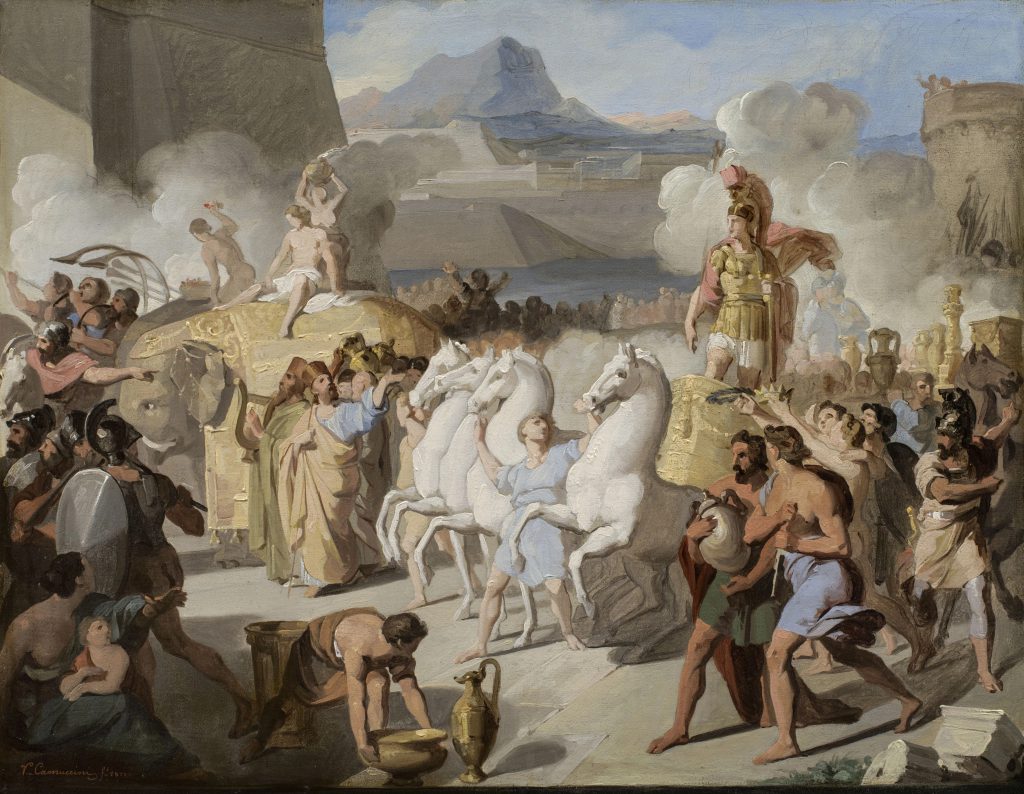
Colchester currently promotes the image of Claudius processing through its streets on the back of an elephant. This may have occurred, although it is not certain, Claudius would have had access to rained elephants, and Cassius Dio does mention they were in the invasion relief force.
Honours in Rome
These took place in 44 AD with the Senate bestowing honours upon Claudius, poems of commemoration, an issue of special coins and the building of two triumphal arches. One stood in Rome, the other on the coast of the Channel. These were not dedicated until 52 AD.
Special Honoros
When the Senate learned of these achievements, it awarded Claudius the title Britannicus and gave him permission to celebrate a triumph. […] They also bestowed on his son the same title, with the result that Britannicus came in a way to be the boy’s actual name.
Cassius Dio Cocceianus, The Histories of Rome Book LX, Chapters 22
Both Claudius and his son were bestowed with the title Britannicus. This was in keeping with the Roman tradition of granting honours using the name of the conquered territories.
The senate then did something that was unique. They gave a seat on the Senate to Claudius’ wife, Messalina. She was also allowed the use of the carpentum at state ceremonies. This was normally reserved for the consuls and the Vestal Virgins. Claudius’ commanders were given the honour triumpalia ornamenta. Claudius felt he had finished the task first attempted by his uncle, Julius Caesar, and so this, he felt, created a special link between them.
A Roman Triumph
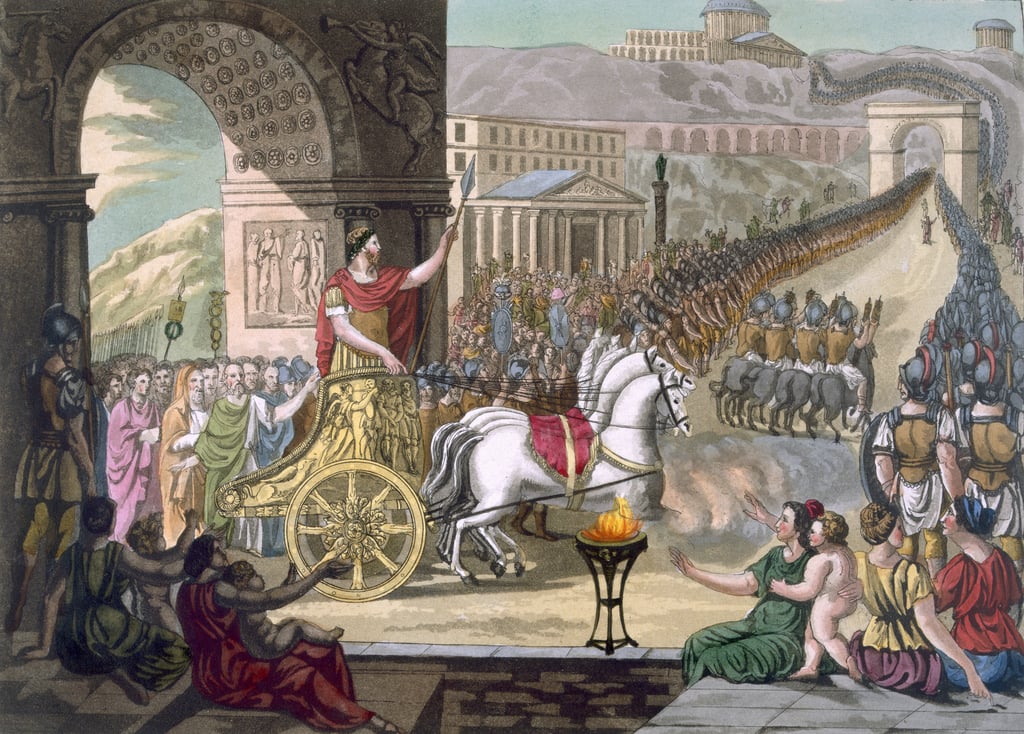
The highlight of Claudius’ celebrations was a Triumphal procession through Rome. It took a long time to arrange the Triumph as the Romans were very much into protocol. This meant that everyone in the procession must be in a certain place, according to their status. Claudius and his wife led the parade, with his commanders behind.
He was back in Rome within six months, and there celebrated a splendid triumph. He summoned the provincial governors to Rome to witness the spectacle, and even certain exiles. […] Messalina, his wife, followed his chariot in a carriage, with the generals who had won triumphal regalia in the campaign marching behind in purple-fringed togas, all except Marcus Licinius Crassus Frugi, who rode a caparisoned charger and wore a palm-embroidered tunic since he was receiving the honour for the second time.
Suetonius: The Twelve Caesars: The Life of Claudius
Golden Crowns
It was customary for the larger cities to donate wreaths of gold to the Emperor.
Guilds would also donate gold to the Emperor in celebration. There is a manuscript in the British Museum (Papyrus 1178) of a Letter of the emperor Claudius to the synod of athletes, with thanks for the golden crown he was sent for his victories. Dated to 46.
To mark his success, he set one of the victory tokens, the naval crown, on a gable of the Palace next to the civic crown, signifying that he had crossed and conquered, so to speak, the Ocean.
Suetonius: The Twelve Caesars: The Life of Claudius
The Naval Crown (Latin: corona navalis) was a gold crown surmounted with small replicas of the prows of ships. It was a Roman military award, given to the first man who boarded an enemy ship during a naval engagement.
Arch of Claudius
The Senate, by dutifully voted Claudius a triumphal arch for his conquest of Britain. Its was erected on the northern approaches to Rome, where the Aqua Virgo aqueduct (newly rebuilt by Claudius) crossed a major road and it was dedicated in AD 51. The Arch has disappeared, but extensive remains were found in 1562 and 1641. Of the inscription only the left-hand quarter survives, the remainder had to be reconstructed.
They also voted to hold an annual festival and to erect two triumphal arches, one in Rome, the other in Gaul, from where he had put to sea when he crossed to Britain.
Cassius Dio Cocceianus, The Histories of Rome Book LX, Chapters 22
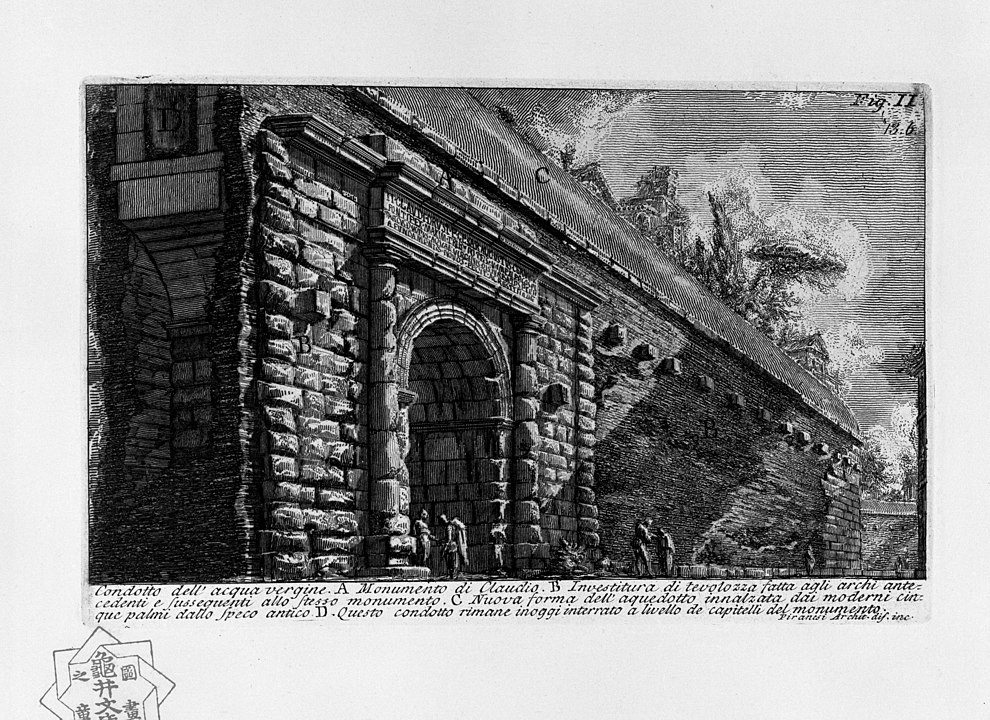
Here is a translation of the inscription on the Arch:
To Tiberius Claudius Caesar Augustus Germanicus, son of Drusus, pontifex maximus, in
ILS 216
the eleventh year of his tribunician power (AD 52), consul five times, imperator 22 times,
censor, Father of his Country, from the Roman Senate and People, because he received
in surrender eleven kings of the Britons conquered without loss and first brought the
barbarian peoples across the Ocean under the authority of the Roman people.’
In Asia Minor on the Sea of Marmara, the expatriate community of Romans at Cyzicus erected an arch of their own with an inscription commemorating Claudius’ conquest of Britain was probably a copy of the one at Rome.
Statue in Aphrodisias in western Turkey
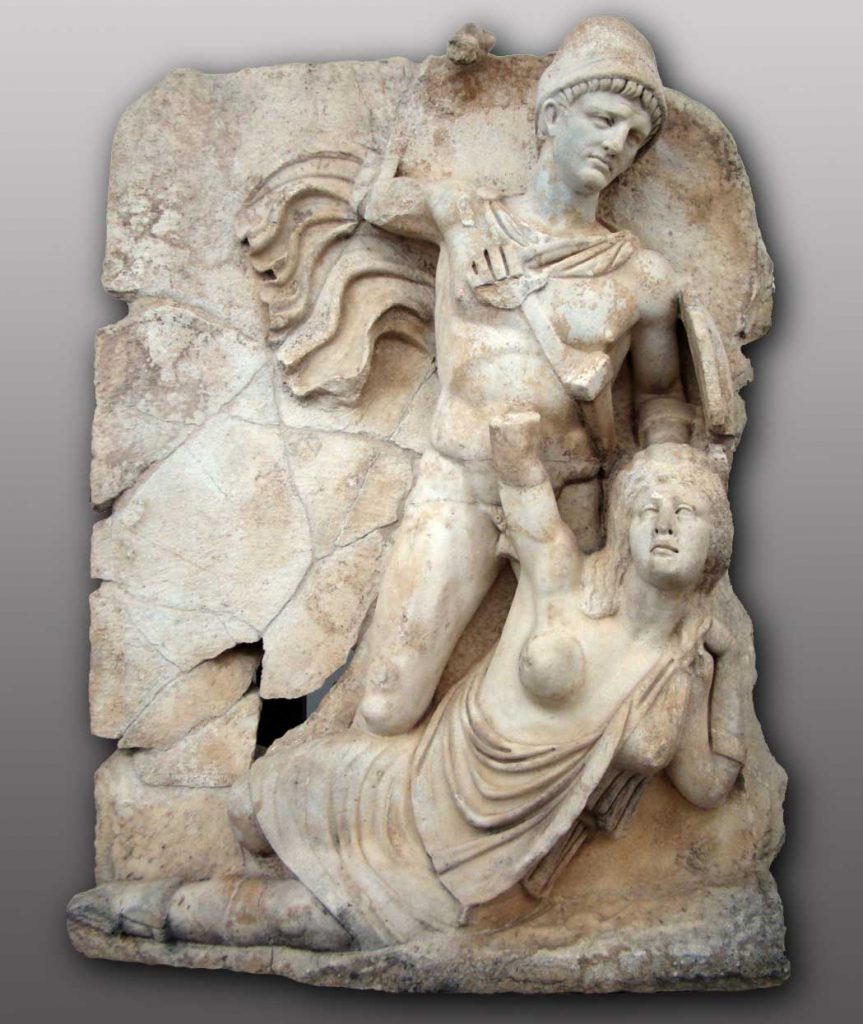
In Aphrodisias in western Turkey there is a statue of Claudius, heroically nude, bestrides an Amazon-like figure which wears a short tunic and boots; with one hand he draws back her head, with the other he is about to plunge a spear into her bare breast. in western Turkey, a naked Emperor Claudius is poised to deal a death blow to a female Britannia. She’s slumped between his legs, one breast exposed like an Amazon warrior.
Commemorative Coins – Victory over the Britons
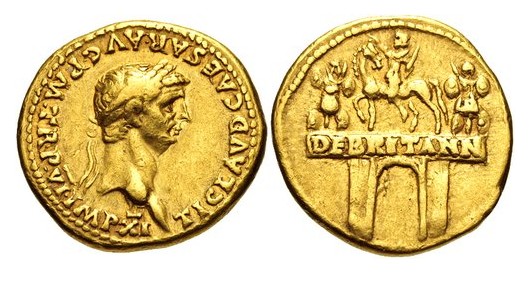
Copyright Classical Numismatic Group, LLC
Commemorative coins were minted for the occasion. They were minted in 46, 49, 50 and 51 AD. all having the inscription “De Britannis” along with an image of a triumphal arch.
Although the coins depicted Claudius’ triumphal arch, they actually were minted in AD 46–47 and 49, before the arch was dedicated in AD 51. The coins depict the Arch surmounted by an equestrian statue between two trophies. However, the real structure was a conversion of one of the arches of the Aqua Virgo aqueduct at the point where it crossed the Via Flaminia, the main road to the north, just north of the Saepta.
